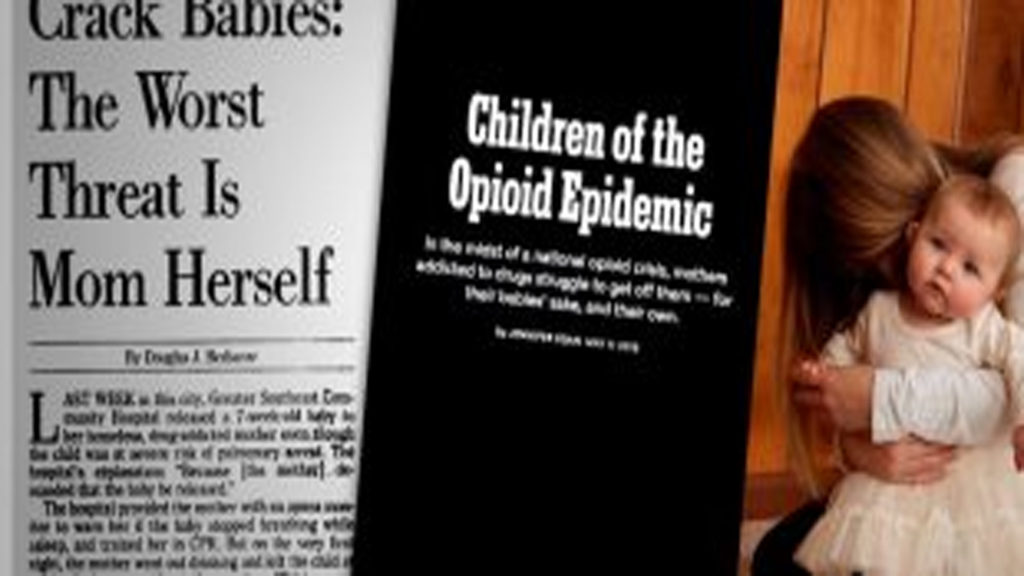Have you heard about the opioid epidemic? Do you remember the crack epidemic? When you hear opioid epidemic do you not envision a white person? When you hear crack epidemic, do you not associate it with a black person? The purported Liberal media is to blame for your perceptions that are in fact wrong.
As reported by the Criminal Justice Policy Foundation, the reality is that most crack users are white,
Who uses crack cocaine, and why?
Media stereotypes paint crack users as inner-city crackheads and irresponsible “crack mothers” who spend all day chasing their next high. The political furor against these crack users has been fueled by racially coded language—as a result of overwhelmingly skewed media portrayals, one 1995 study found that 95% of those asked to picture a drug user envisioned a black person. Here’s the truth:
MOST CRACK USERS ARE WHITE, ESPECIALLY AMONG YOUNG ADULTS.
- Statistics from the 2012 National Survey on Drug Use and Health reveal that 55% of past-month crack users are white. Black Americans, who make up 12.2% of the population, account for 37% of crack users, meaning that they are 3.5 times more likely than whites to be regular crack users. But black people are 21.2 times more likely than white people to go to federal prison on a crack charge.
- The black share of the crack using population is only dropping. Today, young white people are nine times more likely to try crack cocaine than young black people, and the disparity is increasing.
As reported by NPR, the opioid epidemic as well affects mostly whites.
The face of the opioid epidemic has been mostly white, and that’s because we have seen a massive increase in drug overdoses among young white adults, often in rural areas.
An article in Alternet titled “How the Media Portrays Black and White Drug Users Differently” explains the media fraud best.
On Mother’s day, New York Times Magazine published a cover story titled “Children of the Opioid Epidemic.” The photo on the cover of the magazine was the image of a young white mother holding a cherub-like infant dressed in pink stockings and lace. The mother is on her knees, gently kissing her daughter’s neck, her face is obscured. The image goes to great lengths to protect the mother and the child – they are both innocent victims of an opioid epidemic. The article begins with the story of Alicia, the setup immediately renders Alicia’s humanity. She struggled with drugs and alcohol from a young age, her family had bouts with both substance misuse and mental illness, her mother acting as the glue held the family together in the suburbs of Rhode Island. We learn of Alicia’s dreams and her struggles before ever learning of her addiction to Percocet medication. Even as Alicia’s use bloomed, the writer recognized Alicia’s need to use the drugs as a coping tool, to calm her anxieties, to quiet the voices that drove her toward self-sabotage. Alicia’s drug use didn’t diminish her humanity; it made it more salient, more immutable. …
It is apt that the light shone on the New York Times, a publication that proffered racist and sensationalized journalism depicting black people as sex-crazed cocaine addicts and black children born to mothers who used cocaine as broken and irredeemable. It is not hyperbolic to claim that the New York Times had a role in the creation of the modern war on drugs, one it now deems to be a failure.
The New York Times and other major national publications fanned the flames of the drug war, and have now pivoted their coverage to protect white victims and whiteness. Telling stories in a way that allows people to exist beyond their drug use is not the issue; it should be standard practice. What is surprising is that the New York Times and other publications have not done the work of looking through the archives to see the harm they have caused historically and presently – especially the harm done to black mothers.
The article in The Guardian titled “Amid the opioid epidemic, white means victim, black means addict” says it best.
The opioid epidemic is yet another slap in the face to black Americans that we can see clearly, but white Americans cannot. I find myself wishing that there was a rehab for them to go to. A place where they can unlearn all of the falsehoods about race that they’ve been taught. I wish there was a place that could prove to them once and for all that they are not favored by God and superior because of the color or lack thereof in their skin. I wish there was a place that could prove to them that this thinking is nothing short of a pathology. But no such place exists and, in the end, it’s hard to disabuse anyone of a lie that comforts them.

